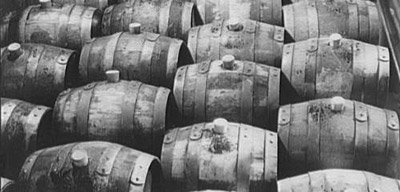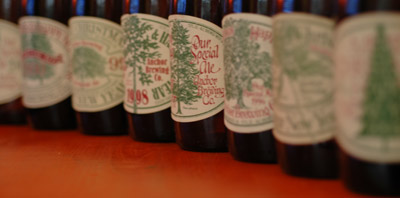It seems safe to say that Todd Haefer does not like Anheuser-Busch’s Michelob Celebrate Vanilla Oak. He writes:
“I get the suspicious feeling that this is a beer that originated from marketing, not from brewers. It also appears that it was approved by marketers who only drink wine, or Perrier water, or soda pop. I can’t imagine anyone who seriously enjoys beer tasted this in advance and approved it for public consumption.”
And the flavor?
“So what does the beer actually taste like? Creme soda or a vanilla wine cooler without much of a head. The beer is too sweet, the vanilla too strong and the body is very watery. The oak characteristic is virtually non-existent, as is malt. It also left an unpleasant aftertaste, like Red Bull. I suspect imitation vanilla is also an ingredient.”
Haefer writes a weekly column for the Appleton, Wis., Post-Crescent, but his “reach” is broader, because many other newspaper in the Gannett chain that owns the P-C also run his review. That might or might not make his words more useful to you than those from a particular poster at Rate Beer or Beer Advocate.
Or than those of us who write 75-80 words about a beer every other month for All About Beer magazine. Here’s what I wrote about Celebrate last December:
“Could we label a beer packing 10% alcohol by volume and a distinct smack of bourbon introductory? Celebrate may well familiarize more Americans to wood-influenced beer than hundreds of small-batch brewers have in 10 years. A double blast of vanilla, from freshly milled vanilla beans plus bourbon barrel staves added during maturation, dominates from the nose to a sweet finish. Bourbon almost as prominent, more as it warms. An uncomplicated introduction.”
Do you get the feeling that this is a beer I’m not going to spend money on but understand others might? That would be good.
I’m not opposed to Haefer expressing his opinion assertively. That’s a lot better than a critic who feels obiliged to write something nice about every beer. I do wish he’d bothered to learn a little about the beer, because sometimes the story behind a beer becomes part of the beer.
For me, another part of the story is what others think of the beer because – like Haefer – it has more “reach” than any bourbon-oak-vanilla beer made by a small-batch brewer. Check out the Rate Beer reviews and those at Beer Advocate and you’ll see they are mixed – which given that this is an A-B product and most reviewers at those sites are biased against A-B indicates that quite a few people like Celebrate.

It doesn’t hurt any “reviewer” to remind yourself not everybody shares your tastes. I much prefer, and am much more likely to praise, a beer that tastes like beer and certainly one with more complexity. A-B gets credit for experimenting with freshly milled vanilla beans. A small-batch brewer gets more for coaxing that flavor out of the wood. To me a beer that is aged in bourbon barrels rather than on staves has an almost unfair advantage.
So is there a lesson here? You have to decide if you want to read newspaper reviews, hang out at beer rating sites, lean on friends for advice, even trust what I write about these beers.
Meanwhile I get to tell one more story.
When I asked a distributor why his company chose not to stock Celebrate Vanilla or the new Celebrate Chocolate this year he said his bosses thought the price was too high for the average customer. Imagine what it would be if A-B had added in the cost of moving beer in and out of bourbon barrels instead of tanks that hold 1,400 barrels (its smallest) and more.
On the other hand it took Tomme Arthur of Port Brewing/Lost Abbey just a moment to do the math.
“We’d go out and buy the extra 834 oak barrels,” he said.
